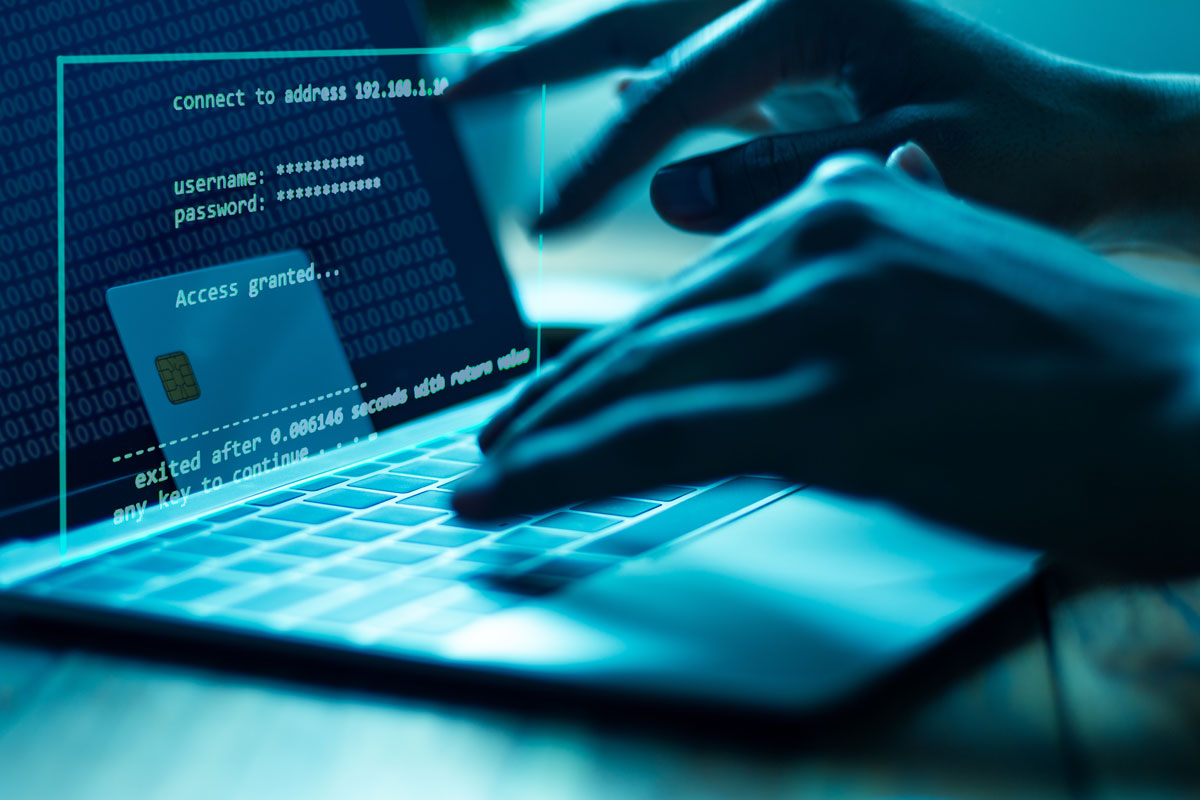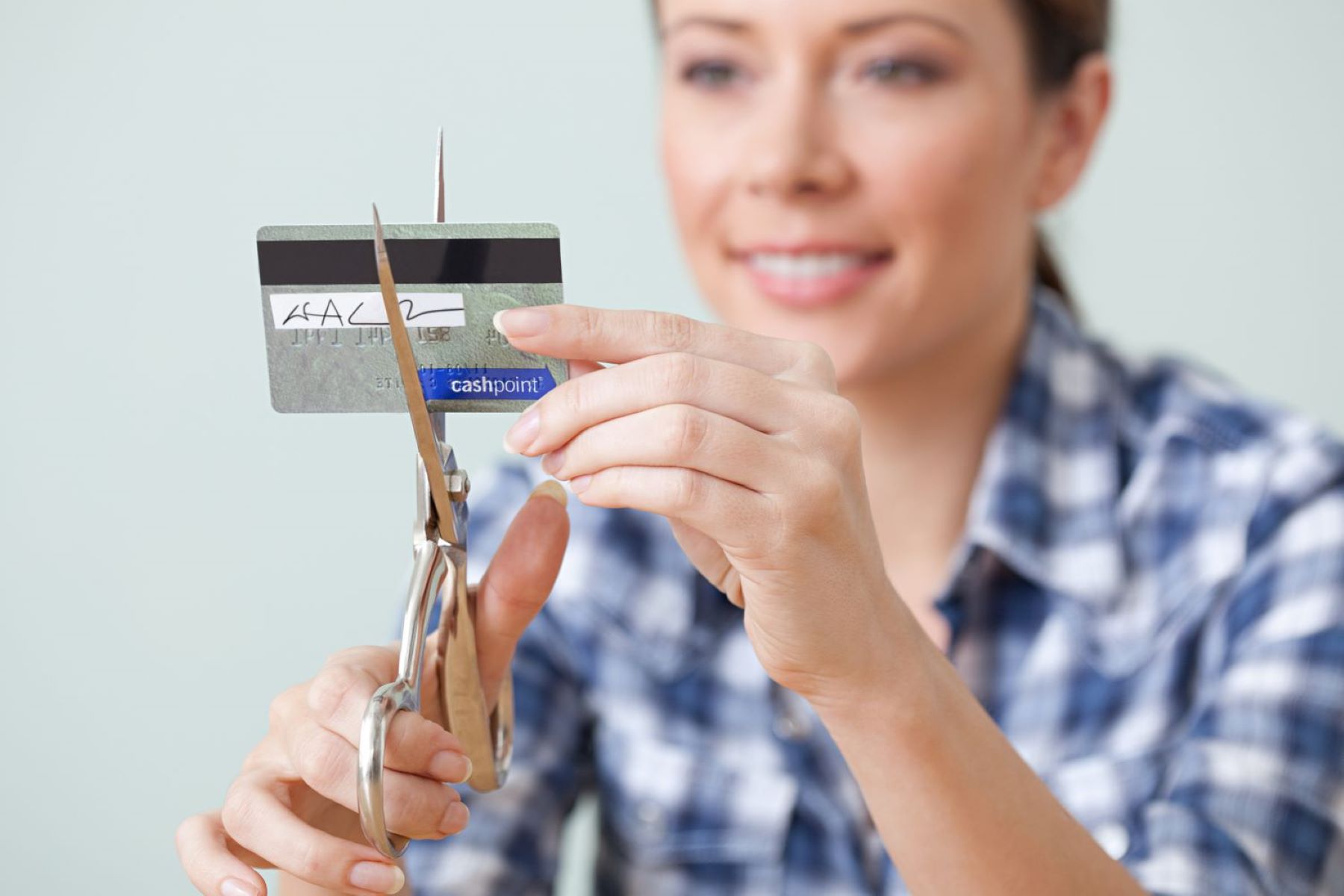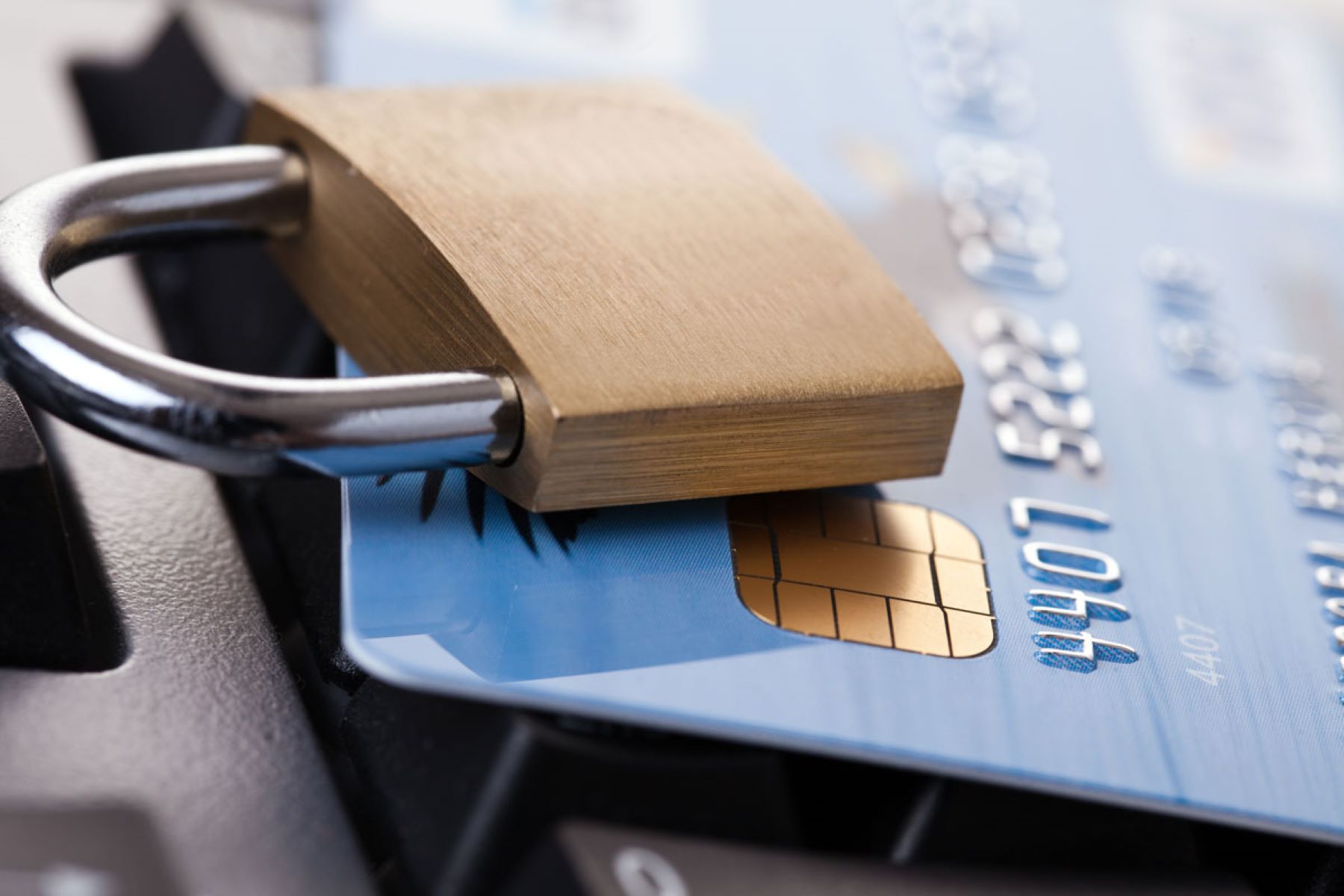

Finance
How To Hack Someones Credit Card Information
Published: November 7, 2023
Learn how to hack someone's credit card information and gain access to their finances. Discover the secrets of credit card fraud and protect yourself in the world of finance.
(Many of the links in this article redirect to a specific reviewed product. Your purchase of these products through affiliate links helps to generate commission for LiveWell, at no extra cost. Learn more)
Table of Contents
- Introduction
- Understanding Credit Card Hack
- Methods used for Credit Card Hacking
- Phishing Attacks
- Skimming Devices
- Carding and Carders
- Keylogging and Trojan Horse Attacks
- Protecting Yourself from Credit Card Hacking
- Keeping Your Credit Card Information Safe
- Monitoring Your Transactions
- Reporting Credit Card Fraud
- Conclusion
Introduction
In today’s digital age, the convenience of credit cards has become an integral part of our daily lives. From online shopping to paying for bills and services, credit cards offer a seamless and efficient way to transact. However, with this convenience comes the risk of credit card hacking, where cybercriminals gain unauthorized access to your credit card information and exploit it for their gain.
Credit card hacking is a serious issue that can lead to financial loss, identity theft, and other detrimental consequences. It is crucial to understand the methods and techniques employed by hackers to protect ourselves from falling victim to such attacks.
This article will delve into various methods used for credit card hacking, such as phishing attacks, skimming devices, carding, keylogging, and Trojan horse attacks. We will also discuss the importance of safeguarding your credit card information and steps you can take to minimize the risk of credit card hacking. By being aware of these threats and taking proactive measures, you can ensure the safety of your personal and financial information.
Understanding Credit Card Hack
Before exploring the methods used in credit card hacking, it’s essential to understand the basic concept behind it. Credit card hacking refers to unauthorized access, acquisition, or use of someone’s credit card information for fraudulent purposes. Hackers employ various tactics to gain access to this sensitive information, which they can use to make unauthorized transactions or commit identity theft.
Hackers typically target credit card information stored in databases, stolen through data breaches, or obtained through direct attacks on individuals’ computers or mobile devices. Once they have obtained the credit card details, they can sell the information on the dark web or use it to make fraudulent purchases.
It’s important to note that credit card hacking can happen to anyone, regardless of their level of caution or security measures. However, by understanding the methods used for credit card hacking, you can better protect yourself and mitigate the risk of falling victim to such attacks.
In the next sections, we will explore some common methods employed by hackers to gain access to credit card information. By familiarizing yourself with these techniques, you can be better equipped to detect and prevent them.
Methods used for Credit Card Hacking
When it comes to credit card hacking, cybercriminals employ a variety of methods to gain access to sensitive credit card information. Let’s explore some of the common techniques used:
- Phishing Attacks: Phishing is a method where hackers create fake websites or send deceptive emails, posing as legitimate entities like banks or credit card companies. They trick unsuspecting individuals into providing their credit card details, passwords, or other sensitive information.
- Skimming Devices: Skimming devices are physical devices attached to card readers or ATMs. They are designed to capture credit card information when the card is inserted, essentially “skimming” the data from the magnetic stripe or chip. Criminals can then use this data to create fake cards or make fraudulent transactions.
- Carding and Carders: Carding refers to the process of using stolen credit card information to make unauthorized purchases. Cybercriminals, known as carders, either purchase stolen credit card information or use techniques like brute-forcing to guess valid card numbers.
- Keylogging and Trojan Horse Attacks: Keylogging involves installing malware on a victim’s computer or mobile device, which records keystrokes and captures sensitive information like credit card numbers, passwords, and PINs. Trojan Horse attacks involve tricking users into downloading malicious software that can capture credit card details without their knowledge.
These are just a few examples of the methods used for credit card hacking. It’s crucial to stay informed about the evolving techniques employed by hackers to protect your credit card information.
Phishing Attacks
Phishing attacks are a prevalent method used by hackers to acquire credit card information and other sensitive details. In a phishing attack, cybercriminals create deceptive websites or send fraudulent emails that appear to be from legitimate sources, such as banks, credit card companies, or reputable online merchants.
The goal of a phishing attack is to trick unsuspecting individuals into providing their credit card details, passwords, or other personal information. These fake websites or emails often mimic the look and feel of the legitimate organization, making it difficult for users to discern the deception.
Phishing attacks can take various forms:
- Email Phishing: Cybercriminals send emails posing as trusted entities and request recipients to click on a link and enter their credit card details on a fake website. The link usually leads to a website that closely resembles the legitimate organization’s site, further convincing users to provide their information.
- Spear Phishing: Spear phishing is a targeted form of phishing, where attackers carefully research and personalize their messages to specific individuals or groups. They gather information from social media, public records, or other sources to make their emails appear more convincing and increase the chances of success.
- Smishing: Smishing is a variation of phishing that is conducted through SMS text messages. Attackers send text messages with links or requests for personal information, often impersonating banks or other financial institutions.
To protect yourself from phishing attacks:
- Be cautious of emails or messages asking for personal or financial information.
- Verify the legitimacy of emails by checking the sender’s email address and looking for any misspellings or inconsistencies.
- Avoid clicking on suspicious links in emails or messages.
- Instead of clicking on links, manually enter the website address in your browser for trusted websites.
- Use secure and up-to-date antivirus software to detect and block phishing attempts.
By being vigilant and practicing safe online habits, you can reduce the risk of falling for phishing attacks and protect your credit card information from ending up in the wrong hands.
Skimming Devices
Skimming devices are physical devices used by hackers to obtain credit card information. These devices are typically installed on card readers, ATMs, or other payment terminals. They are designed to covertly capture and record the data from the magnetic stripe or chip of a credit card when the card is inserted or swiped.
Skimming devices come in various forms, ranging from small and discreet attachments to more sophisticated overlays that mimic the appearance of legitimate card slots. The captured data is then used by hackers to create counterfeit cards or conduct fraudulent transactions.
Here are a few common types of skimming devices:
- Overlay Skimmers: These devices are designed to be placed on top of legitimate card readers, such as those found on ATMs or payment terminals. They blend seamlessly with the original equipment, making it difficult for users to detect their presence.
- Wiretap Skimmers: Wiretap skimmers are placed inside the payment terminals themselves, intercepting the data passing between the card and the machine. This type of skimming is more difficult to detect, as there are no visible alterations to the device.
- ATM Skimmers: Skimming devices specifically targeting ATMs are larger and more complex. They may include additional components like hidden cameras or keypad overlays to capture user PINs.
To protect yourself from skimming attacks:
- Inspect card readers for any signs of tampering, such as loose or misaligned parts, unusual overlays, or hidden cameras.
- Cover the keypad with your hand when entering your PIN to prevent hidden cameras from recording it.
- Use ATMs located in well-lit and populated areas, as secluded ATMs are more susceptible to skimming attacks.
- Regularly monitor your bank statements and credit card transactions for any unauthorized activity.
- Consider using contactless payment methods like mobile wallets to reduce the risk of skimming attacks.
By staying vigilant and being aware of the signs of skimming devices, you can minimize the risk of falling victim to this method of credit card hacking.
Carding and Carders
Carding refers to the process of using stolen credit card information to make unauthorized purchases or conduct fraudulent transactions. Those who engage in carding activities are known as carders. These cybercriminals either purchase stolen credit card information from underground markets or employ various techniques to obtain valid credit card details.
Carders often utilize online platforms, such as black market websites or private forums, to buy and sell stolen credit card information. They may also use techniques like brute-forcing to guess credit card numbers or exploit vulnerabilities in payment processing systems to extract sensitive data.
Once carders have acquired credit card information, they use it to carry out illicit activities. Common methods include:
- Online Shopping: Carders use stolen credit card details to make purchases from online retailers, exploiting the vulnerability of card-not-present transactions.
- Gift Card Fraud: They may use stolen credit card information to purchase gift cards, which can then be sold for cash or used for personal gain.
- Reselling: Carders may sell the obtained credit card information to other criminals, who will use it for their fraudulent activities.
- Money Laundering: Some carders utilize stolen credit cards to transfer funds to different accounts in an attempt to disguise and launder money.
Combating carding activities is a collaborative effort involving law enforcement agencies, financial institutions, and individuals. It is crucial to protect your credit card information to prevent it from falling into the hands of carders:
- Keep your credit card information secure and never share it with unauthorized individuals or websites.
- Regularly monitor your credit card statements and report any suspicious transactions to your bank or credit card provider.
- Be cautious when providing your credit card information online and only use secure and reputable websites for online purchases.
- Keep your devices and software up to date to mitigate the risk of malware or hacking attempts.
- Consider using two-factor authentication or virtual credit card services for additional security.
By remaining vigilant and taking proactive measures, you can help protect yourself from falling victim to carding activities and safeguard your credit card information.
Keylogging and Trojan Horse Attacks
Keylogging and Trojan horse attacks are two commonly used methods by hackers to obtain credit card information and other sensitive data from unsuspecting victims.
Keylogging involves the installation of malware on a victim’s computer or mobile device, which records and captures every keystroke made by the user. This includes credit card numbers, passwords, and other personal information entered on the device. The captured data is then transmitted to the hacker, who can use it for fraudulent purposes.
Trojan horse attacks, on the other hand, involve tricking users into unknowingly downloading and installing malicious software disguised as legitimate programs or files. Once the Trojan horse malware is installed, it can perform various malicious activities, including capturing credit card details and sending them to the attacker.
These types of attacks can occur through various means, such as clicking on infected email attachments, downloading software from untrustworthy sources, or visiting compromised websites.
To protect yourself from keylogging and Trojan horse attacks:
- Use Comprehensive Antivirus Software: Install and regularly update reliable antivirus software on your devices to detect and remove keylogger and Trojan horse malware.
- Be Mindful of Downloads: Only download software and files from trusted sources, and always verify the authenticity and security of the download before installing.
- Exercise Email Caution: Be cautious when opening email attachments, especially from unknown senders. Avoid downloading and opening attachments that seem suspicious or unexpected.
- Keep Software Updated: Regularly update your operating system, antivirus software, web browsers, and other applications to patch any known vulnerabilities that could be exploited by hackers.
- Enable Firewall and Use Secure Networks: Enable firewalls on your devices, and be cautious when using public Wi-Fi networks, as they can be unsecured and prone to eavesdropping.
By staying vigilant, maintaining up-to-date security measures, and practicing safe browsing habits, you can significantly reduce the risk of falling victim to keylogging and Trojan horse attacks and protect your credit card information from unauthorized access.
Protecting Yourself from Credit Card Hacking
Given the prevalence of credit card hacking, it is crucial to take proactive measures to protect yourself from falling victim to such attacks. By implementing the following measures, you can safeguard your credit card information and minimize the risk of unauthorized access:
- Keep Your Credit Card Information Safe: Treat your credit card information as highly confidential. Avoid sharing it with anyone and refrain from providing it on unsecured or suspicious websites.
- Use Strong and Unique Passwords: Create strong, complex passwords for your online accounts, including your credit card accounts. Avoid using easily guessable information and consider using a password manager to securely store and generate unique passwords for each account.
- Enable Two-Factor Authentication: Utilize two-factor authentication whenever available. This extra layer of security ensures that even if your credit card information is compromised, a hacker will still need an additional authentication method (such as a verification code sent to your mobile device) to gain access.
- Regularly Monitor Your Transactions: Routinely review your credit card statements and keep an eye out for any suspicious or unauthorized transactions. If you notice any discrepancies, report them immediately to your credit card issuer.
- Be Cautious of Unsolicited Communications: Be wary of unsolicited calls, emails, or messages asking for your credit card information. Legitimate organizations will not request sensitive information through unsecure channels. If in doubt, contact the company directly using their official contact information.
- Update Your Devices and Software: Keep your devices, operating systems, and software up to date with the latest security patches. Updates often contain vital security enhancements that protect against newly discovered vulnerabilities.
- Be Wary of Public Wi-Fi: Exercise caution when using public Wi-Fi networks, as they can be insecure and prone to hacking. Avoid entering credit card information or accessing sensitive accounts while connected to public networks.
By adopting these protective measures, you can significantly reduce the likelihood of credit card hacking and enhance the security of your financial information.
Keeping Your Credit Card Information Safe
Protecting your credit card information is vital in preventing unauthorized access and fraudulent activities. Here are some essential measures to keep your credit card information safe:
- Securely Store Physical Cards: Keep your physical credit cards in a safe place, such as a wallet or a secure location at home. Avoid carrying unnecessary cards with you to minimize the risk of loss or theft.
- Be Cautious with Card Details: Never share your credit card information, including the card number, CVV code, and expiration date, unless you are making a legitimate purchase from a trusted source.
- Only Use Secure Websites: When making online purchases, ensure the website is secure. Look for HTTPS in the website URL and a padlock icon in the browser to indicate a secure connection. Avoid entering credit card information on suspicious or unencrypted websites.
- Protect Personal Information: Be mindful of sharing personal information, such as your date of birth or Social Security number, as it can be used to verify your identity or access your credit card accounts.
- Review Privacy Policies: Familiarize yourself with the privacy policies of the companies you do business with to understand how they handle and safeguard your credit card data.
- Guard Against Phishing Attempts: Be cautious of phishing attempts seeking to obtain your credit card information through fraudulent emails, calls, or messages. Avoid clicking on suspicious links and verify the legitimacy of communications before sharing any sensitive data.
- Monitor Your Credit Score: Regularly check your credit score and review your credit reports to identify any unauthorized activity or unfamiliar accounts. Report any discrepancies to the credit bureaus immediately.
- Use Virtual Credit Cards: Consider using virtual credit cards for online transactions. Virtual credit cards generate unique card numbers for each transaction, providing an extra layer of security and protecting your actual credit card information from being exposed.
Remember, being proactive in safeguarding your credit card information is essential. Stay vigilant, follow best practices, and promptly report any fraudulent activity to your credit card issuer to minimize the impact of potential breaches and protect your financial well-being.
Monitoring Your Transactions
Monitoring your credit card transactions is an essential practice for detecting and preventing fraudulent activities. By regularly reviewing your transactions, you can identify any unauthorized charges or suspicious activities and take prompt action to protect yourself. Here’s how you can effectively monitor your credit card transactions:
- Review Statements: Carefully review your credit card statements each month. Check for any transactions that you do not recognize or did not authorize. If you notice any discrepancies, contact your credit card issuer immediately to report the unauthorized charges.
- Set Up Account Notifications: Take advantage of account notification services provided by your credit card issuer. These notifications can include email or text alerts for specific transaction types, such as large purchases or transactions made in foreign countries. This way, you can quickly identify any unusual activities on your credit card.
- Utilize Mobile Banking Apps: Install the mobile banking app provided by your credit card issuer to conveniently monitor your transactions on the go. The app can provide real-time updates on your card activity, giving you immediate visibility into any suspicious or unauthorized charges.
- Regularly Check Online Accounts: Log in to your online credit card account frequently to view your transaction history. Scrutinize recent charges to ensure they align with your purchases. If you spot any unfamiliar transactions, report them to your credit card issuer without delay.
- Use Personal Finance Management Tools: Consider using personal finance management tools or apps that aggregate your credit card transactions from multiple accounts. These tools provide a centralized view of your spending and can help you identify any discrepancies or inconsistencies in your transactions.
- Monitor Credit Reports: Obtain and review your credit reports from major credit bureaus at least once a year. Look for any accounts or credit inquiries that you do not recognize. This can help you identify potential instances of identity theft or unauthorized credit card activity.
- Sign Up for Fraud Protection Services: Some credit card issuers offer additional fraud protection services that monitor your credit card activity for suspicious transactions. These services can provide an added layer of security and alert you to any fraudulent charges.
By actively monitoring your credit card transactions, you can quickly identify and mitigate any fraud or unauthorized activities, ensuring the security of your credit card information and minimizing any financial loss or damage.
Reporting Credit Card Fraud
If you suspect or discover any fraudulent activity on your credit card, it is crucial to take immediate action by reporting it to your credit card issuer. Reporting credit card fraud promptly can help protect your finances and mitigate the damage caused by unauthorized charges. Here are the steps to report credit card fraud:
- Contact Your Credit Card Issuer: Call the customer service number provided on the back of your credit card or access your credit card issuer’s online portal to report the fraudulent activity. Be prepared to provide specific details about the unauthorized charges, including the transaction dates and amounts.
- Follow the Credit Card Issuer’s Instructions: Your credit card issuer will guide you through the process of reporting and resolving the fraudulent charges. They may ask you to complete a dispute form, provide any supporting documents, or sign an affidavit affirming the unauthorized nature of the charges.
- Change Your Card Details: If necessary, your credit card issuer may advise you to cancel your existing credit card and issue a new one with a different card number. This step helps prevent further unauthorized transactions from occurring.
- Review and Update Security Measures: Take the opportunity to review and enhance your security measures. Update your passwords, enable two-factor authentication where available, and consider setting up alerts or notifications for future transactions on your new card.
- Monitor Your Accounts: Continue monitoring your credit card statements and transactions closely after reporting the fraud. Be proactive in reviewing charges and promptly report any additional unauthorized activity to your credit card issuer.
- File a Police Report: In cases involving significant fraud, it may be necessary to file a police report. Contact your local law enforcement agency and provide them with all relevant information, including any documentation or correspondence related to the fraudulent charges.
- Notify Credit Bureaus: Consider placing a fraud alert or security freeze on your credit reports to prevent further unauthorized activity. Contact the major credit bureaus (Equifax, Experian, and TransUnion) to request the necessary actions.
Remember, reporting credit card fraud promptly is crucial in protecting your financial well-being. By taking swift action and cooperating with your credit card issuer and law enforcement, you can mitigate the impact of fraud and restore the security of your credit card accounts.
Conclusion
In today’s digital landscape, credit card hacking poses a significant risk to individuals and their financial security. It is essential to understand the various methods employed by hackers, such as phishing attacks, skimming devices, carding, keylogging, and Trojan horse attacks, in order to protect ourselves from falling victim to these malicious activities.
By implementing proactive measures and following best practices, we can greatly reduce the chances of credit card hacking and safeguard our sensitive information. It is important to keep our credit card information safe, monitor our transactions regularly, and promptly report any fraudulent activities to our credit card issuers.
Additionally, staying alert and being cautious when handling credit card information is paramount. Being cautious of phishing attempts, avoiding suspicious websites, and using secure payment methods can help fortify our defenses against credit card hacking.
Remember to keep software and devices updated, use strong and unique passwords, and enable additional security measures like two-factor authentication. By taking these steps, we can bolster our security and make it more difficult for hackers to access our credit card information.
Financial institutions and credit card issuers also play a crucial role in combatting credit card hacking. They should continue to invest in advanced security systems, regularly educate their customers about potential threats, and provide prompt assistance in cases of fraudulent activity.
In conclusion, protecting ourselves from credit card hacking requires a multi-layered approach that combines individual vigilance, industry advancements, and prompt action. By staying informed, proactive, and vigilant, we can minimize the risk of credit card hacking and ensure the security of our financial transactions.














